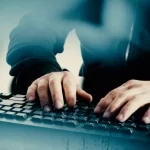Soaring interest rates, rising labour costs and the industry’s insolvency crisis have pushed building approvals below what they were in 2013.
New data released by the Australian Bureau of Statistics (ABS) on Thursday showed that in the last 12 months leading up to October, only 166,236 dwellings were approved by local councils – well below the required 200,000 target set by the federal government.
Free-standing homes and apartment buildings especially felt the pinch, with both seeing a significant 13 per cent drop on last year’s results.
On average, Australia is now approving 30 per cent fewer apartment buildings than we have historically.
Thanks to government initiatives geared towards improving city density, multi-unit dwelling approvals actually saw an increase of over 19 per cent in October. However, these results are still 14 per cent lower than 12 months ago.
According to ABS head of construction statistics Daniel Rossi, only 55,029 dwellings were approved between July and October in 2023, compared with 65,599 over the same period in 2022.
In his assessment of the data, Housing Industry Association Senior Economist Tom Devitt said that, until now, a strong pipeline of projects over the last two years has protected builders from feeling the full impact of the “sharpest rate hiking cycle in a generation”.
“This pipeline is now shrinking, and in 2024, home builders will be starting construction on fewer new houses than at any time in the last decade,” said Mr Devitt in a statement provided to Build-it.
“We have known this was coming for over a year. Leading indicators like new home sales, housing finance, building approvals and consumer confidence have been depressed all year.
“The problem is the RBA has been impatient in wanting to see progress in its lagging indicators, namely a rise in unemployment and a faster decline in inflation.
“With home building pipelines now shrinking, 2024 will be the year that these lagging indicators start to reflect the full impact of what the RBA has done over the last year and a half.
What does this mean for the future?
With no end in sight for rising construction costs, the National President of the Urban Development Institute of Australia, Col Dutton, says things will get much worse before they get better.
“The reality is that instead of unlocking land supply and fast-tracking approvals, we have less approvals than we did 12 months ago, and this needs to be reversed as a priority,” he said.
“UDIA analysis indicates that there is a 22 per cent attrition rate between approvals and actual dwelling completions, which means the drop in housing is greater than the number suggests.
“We urgently need to boost housing supply across the entire continuum and especially housing for the vast majority of ordinary Australians facing cost of living pressures.”
Master Builders Australia CEO Denita Wawn warned that roadblocks proposed by the federal government would make building the much-needed 1.2 million homes within five years “a huge challenge”.
“Unless we make concerted efforts to quickly boost housing supply and reduce the cost of building new homes, we will continue to see the housing and rental crisis worsen,” said Ms Wawn.
“While some states and territories are making strides at the planning level, the Federal Government is adding extra cost layers to building through their new IR laws, undermining the efforts of housing ministers.
“This week, we saw the Albanese Government and the Greens brush off the housing crisis and pass damaging reforms that threaten the rights of independent contractors, subcontractors and self-employed tradies to be their own boss.
“It’s now up to the Senate to allow common sense to prevail and stop this Bill.”




